
views
Set a goal for yourself.

Goals motivate you and give you a tangible number to reach for. You can set a goal that involves running a certain distance in a specific length of time—for example, your goal could be to run 1 mile in 8 minutes. Alternatively, you could set yourself a goal that involves increasing the number of steps you take in a minute or your cadence. The fastest runners in the world have an average cadence of around 180 steps per minute. It is important to have a specific goal in mind as you are training to run faster. Having a goal will increase your motivation and force you to push yourself that little bit harder in order to attain it. To find your current cadence, run for 60 seconds, counting the number of times your right foot hits the ground. Then, double this number to find your existing cadence.
Run sprints.

Practice running quickly to get your heart rate up. Even if you’re not a sprinter, running sprints is a great way to increase your speed and focus on your form. Do sprints by warming up with a quick jog, then sprinting for about 30 seconds. Rest and recover for 2 to 5 minutes, then sprint again. Try to sprint about 4 times in a row before taking a long rest.
Practice fartleks, a version of interval running.
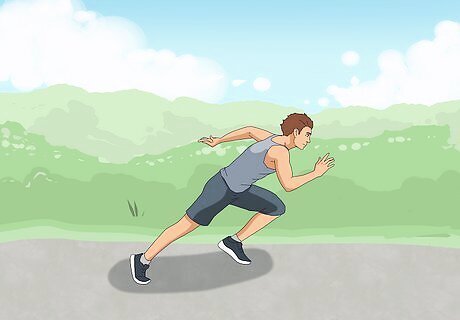
Vary your running pace randomly to increase your stamina. "Fartlek" is a Swedish word meaning "speed play." To do fartlek training, head out on a 40- to 60-minute run, then pick a spot to start sprinting. Sprint as fast as you can for as long as you can (usually only 1 to 3 minutes), then slow back down to your normal pace. Fartleks are a very flexible training method, and you can decide what the ratio of jogging to sprinting will be, depending on how you're feeling on a given day. Most runners don't use very exact methods or timing for doing fartlek training. A lot of times, runners will simply decide to sprint until they get to a particular landmark, like a telephone pole or fire hydrant. The length of the sprint is entirely up to you and your body's ability.
Try tempo runs.
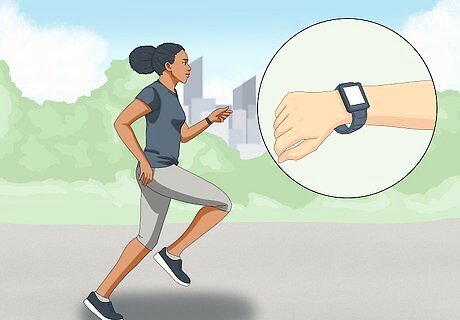
Keep your heart rate up during a run to improve your running speed. To figure out your ideal “tempo,” or running speed, use a running pace calculator. Plug in your information, like a running distance and how long it takes you to run that distance, then mark down the pace that you can comfortably run for 30 minutes. Do a tempo run by heading out and running at your maximum pace for at least 30 minutes to keep your heart rate up the entire time. Your tempo pace may be faster than you’re used to maintaining. If you need to slow down, that’s totally fine. Many runners like tempo runs because they’re so customizable to each person.
Practice interval running.
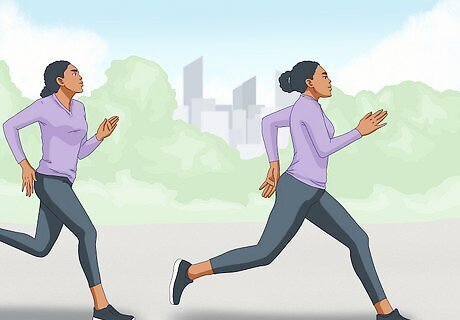
Try different running paces to increase stamina and running distance. Interval running has been shown to increase both speed and stamina in athletes. To do an interval run, run at a medium pace for 1 minute, then jog for 2 minutes. Repeat this cycle 4 times, then cool down at a walking pace for 5 to 10 minutes. By switching back and forth between running and jogging, you’ll not only increase your average running speed, but you’ll increase the distance you can run, too.
Run hills.

Use hills to gradually build speed over time. Either find a hill outdoors somewhere or use a treadmill with an incline setting. Run up and down the same hill going as fast as you can for as long as you can. Over time, your endurance and your stamina will increase, leading to faster run times. Hill runs are actually better for your body too, as they help you to achieve high intensities while limiting the joint shock caused by pounding on flat surfaces. To really get the intensity level up, you can try doing some hill sprints. This involves running up a fairly steep hill for 30 to 60 seconds, at the maximum speed that you can physically maintain for that length of time.
Try plyometrics.
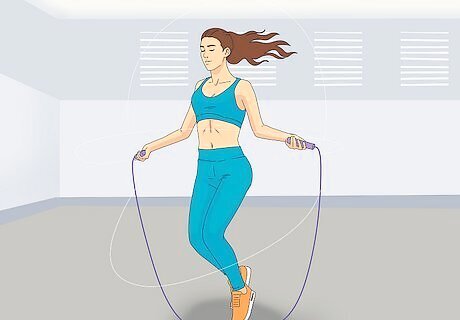
Plyometric exercises improve your speed and the force at which you run. Studies have shown that plyometric exercises help runners in particular, improving how fast you can run during sprints. To do plyometric exercises, focus on moves that emphasize speed and force. Try exercises like: Jumping jacks Jumping rope Jump squats
Strengthen your core.
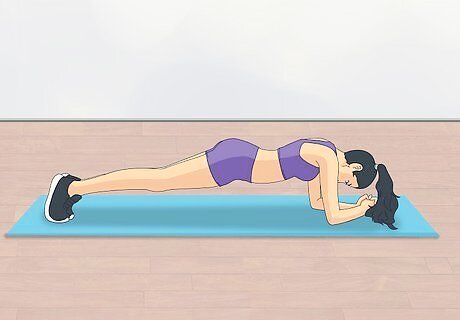
Keep your core muscles strong to hold the proper running form. While it’s tempting to only focus on your leg strength when improving your running speed, your core muscles hold up your torso and keep the proper posture. Be sure to incorporate core workouts, like crunches, sit-ups, and planks into your exercise routine. Work your core at least 2 to 3 times per week to strengthen it over time.
Incorporate weight training.
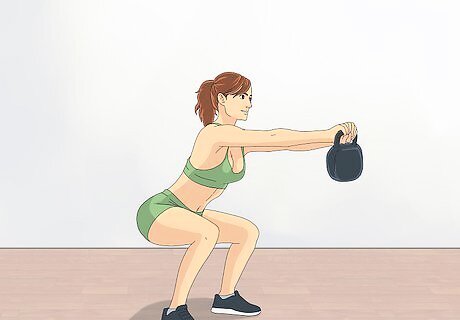
Building muscles helps increase endurance and speed over time. Studies show that even a few weeks of weight training can improve your running speed. Incorporate both upper and lower body weight training exercises into your workout routine, including: Bicep curls Tricep extensions Weighted squats Weighted glute bridge
Try swimming or cycling.
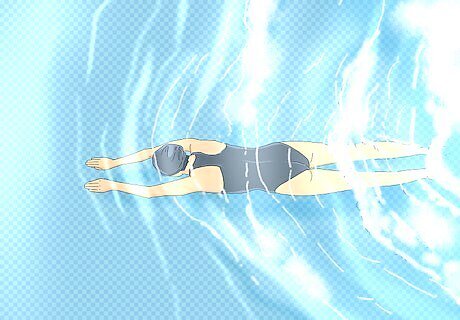
Aerobic exercises increase the amount of oxygen in your muscles. The more oxygen your muscles get, the more powerful they will be, meaning the faster you can run. To do aerobic exercises, pick workouts that get your heart rate up, like: Swimming Cycling Walking Rowing
Warm up before every run.

A quick warmup loosens your muscles and decreases the risk of injury. Before you set out on your run, always warm up for 5 to 10 minutes. Do something light that increases your heart rate, like jogging, jumping jacks, or running in place. When your muscles are warmed up, they’re looser and able to push you further. Running on tight muscles slows you down, and it also increases your chance of injury.
Maintain a balanced diet.

Eating right gives you the fuel you need to stay healthy and run fast. Be sure to eat plenty of fruits, vegetables, lean protein, healthy carbs, and healthy fats. Runners often need more carbohydrates than those who don’t run, so focus on getting 60 to 70% of your diet from healthy carbs. Small portions of whole-grain rice and pasta (rather than their white counterparts, which are void of nutrients) are also a good mealtime accompaniment to lean meat and veggies, making dinner time healthy, tasty and satisfying—a much sought-after combination! Don’t forget to drink water. Since you’re exercising often, keep a water bottle nearby and drink whenever you’re thirsty. Stay away from dehydrating liquids, like caffeine and alcohol, as much as possible.
Give yourself time to relax.

A rest day helps your muscles repair so you can run faster. In addition to eating well, staying hydrated and training effectively, you also need to make sure that your body is getting the rest and recovery time it needs to perform well. Give yourself 1 to 2 days of rest each week where you don’t run at all. If you like, you can perform another type of low-intensity exercise, like walking or doing yoga.


















Comments
0 comment